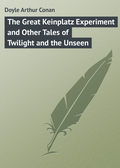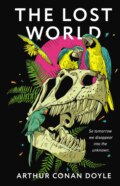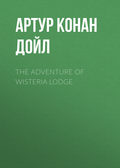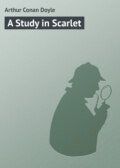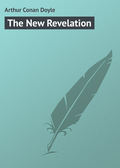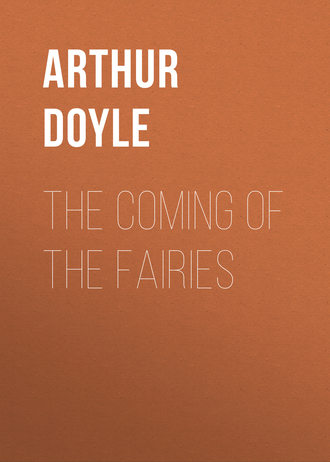
Артур Конан Дойл
The Coming of the Fairies
Fairy Band. There has suddenly arrived in the field a fairy director with a band of fairy people. Their arrival causes a bright radiance to shine in the field, visible to us sixty yards away. She is very autocratic and definite in her orders, holding unquestioned command. They spread themselves out into a gradually widening circle around her, and as they do so, a soft glow spreads out over the grass. They are actually vivifying and stimulating the growth in the field. This is a moving band which arrives in this field swinging high over the tree tops as if from a considerable distance. Inside a space of two minutes the circle has spread to approximately twelve feet wide and is wonderfully radiant with light. Each member of the band is connected to the leader by a thin stream of light. These streams are of different colour, though chiefly yellow, deepening to orange. They meet in the centre, merging in her aura, and there is a constant flow backwards and forwards among them. The form produced by this is something like an inverted fruit dish, with the central fairy as the stem, and the lines of light which flow in a graceful even curve forming the sides of the bowl. This party is in intense activity, as if it had much to do and little time in which to do it. The director is vivified and instructed from within herself, and appears to have her consciousness seated upon a more subtle plane than that upon which she is working.
Fairy. Elsie sees a tall and stately fairy come across the field to a clump of harebells. It is carrying in its arms something which may be a baby fairy, wrapped in gauzy substance. It lays this in the clump of harebells and kneels down as though stroking something, and after a time fades away. We catch impressions of four-footed creatures being ridden by winged figures who are thin and bend over their mounts like jockeys. It is no known animal which they bestride, having a face something like that of a caterpillar.
Amongst this fairy activity which appears all over the field, one glimpses an occasional gnome-like form walking with serious mien across the field, whilst the wood elves and other imp-like forms run about amongst their more seriously employed fairy kind. All three of us keep seeing weird creatures as of elemental essence.
Elsie sees about a dozen fairies moving towards us in a crescent-shaped flight. As they drew near she remarked with ecstasy upon their perfect beauty of form – even while she did so they became as ugly as sin, as if to give the lie to her words. They all leered at her and disappeared. In this episode it may be that one contacts a phase of the antagonism and dislike which so many of the fairy creatures feel for humans at this stage of evolution.
Frances saw seven wee fairies quite near – weird little figures – lying face downwards.
(In the Glen, 18th, 2 p.m.) Frances sees a fairy as big as herself, clothed in tights and a garment scalloped round the hips; the whole is tight-fitting and flesh-coloured; she has very large wings which she opens above her head; then she raises her arms from her side up above her head and waves them gracefully in the air. She has a very beautiful face with an expression as if inviting Frances into Fairyland. Her hair is apparently bobbed and her wings are transparent.
Golden Fairy. One specially beautiful one has a body clothed in iridescent shimmering golden light. She has tall wings, each of which is almost divided into upper and lower portions. The lower portion, which is smaller than the upper, appears to be elongated to a point like the wings of certain butterflies. She, too, is moving her arms and fluttering her wings. I can only describe her as a golden wonder. She smiles and clearly sees us. She places her finger on her lips. She remains watching us with smiling countenance in amongst the leaves and branches of the willow. She is not objectively visible on the physical plane. She points with her right hand, moving it in a circle round her feet, and I see a number, perhaps six or seven, cherubs (winged faces); these appear to be held in shape by some invisible will. She has cast a fairy spell over me completely subjugating the mental principle – leaves me staring wild-eyed in amongst the leaves and flowers.
An elf-like creature runs up the slanting branch of the willow from the ground where the fairy stands. He is not a very pleasant visitor – I should describe him as distinctly low class.
CHAPTER VI
INDEPENDENT EVIDENCE FOR FAIRIES
By a curious coincidence, if it be indeed a coincidence, at the moment when the evidence for the actual existence of fairies was brought to my notice, I had just finished an article dealing with the subject, in which I gave particulars of a number of cases where such creatures were said to have been seen, and showed how very strong were the reasons for supposing that some such forms of life exist. I now reproduce this article, and I add to it another chapter containing fresh evidence which reached me after the publication of the photographs in the Strand Magazine.
We are accustomed to the idea of amphibious creatures who may dwell unseen and unknown in the depths of the waters, and then some day be spied sunning themselves upon a sandbank, whence they slip into the unseen once more. If such appearances were rare, and if it should so happen that some saw them more clearly than others, then a very pretty controversy would arise, for the sceptics would say, with every show of reason, "Our experience is that only land creatures live on the land, and we utterly refuse to believe in things which slip in and out of the water; if you will demonstrate them to us we will begin to consider the question." Faced by so reasonable an opposition, the others could only mutter that they had seen them with their own eyes, but that they could not command their movements. The sceptics would hold the field.
Something of the sort may exist in our psychic arrangements. One can well imagine that there is a dividing line, like the water edge, this line depending upon what we vaguely call a higher rate of vibrations. Taking the vibration theory as a working hypothesis, one could conceive that by raising or lowering the rate the creatures could move from one side to the other of this line of material visibility, as the tortoise moves from the water to the land, returning for refuge to invisibility as the reptile scuttles back to the surf. This, of course, is supposition, but intelligent supposition based on the available evidence is the pioneer of science, and it may be that the actual solution will be found in this direction. I am alluding now, not to spirit return, where seventy years of close observation has given us some sort of certain and definite laws, but rather to those fairy and phantom phenomena which have been endorsed by so many ages, and still even in these material days seem to break into some lives in the most unexpected fashion.
Victorian science would have left the world hard and clean and bare, like a landscape in the moon; but this science is in truth but a little light in the darkness, and outside that limited circle of definite knowledge we see the loom and shadow of gigantic and fantastic possibilities around us, throwing themselves continually across our consciousness in such ways that it is difficult to ignore them.
There is much curious evidence of varying value concerning these borderland forms, which come or go either in fact or imagination – the latter most frequently, no doubt. And yet there remains a residue which, by all human standards, should point to occasional fact. Lest I should be too diffuse, I limit myself in this essay to the fairies, and passing all the age-long tradition, which is so universal and consistent, come down to some modern instances which make one feel that this world is very much more complex than we had imagined, and that there may be upon its surface some very strange neighbours who will open up inconceivable lines of science for our posterity, especially if it should be made easier for them, by sympathy or other help, to emerge from the deep and manifest upon the margin.
Taking a large number of cases which lie before me, there are two points which are common to nearly all of them. One is that children claim to see these creatures far more frequently than adults. This may possibly come from greater sensitiveness of apprehension, or it may depend upon these little entities having less fear of molestation from the children. The other is, that more cases are recorded in which they have been seen in the still, shimmering hours of a very hot day than at any other time. "The action of the sun upon the brain," says the sceptic. Possibly – and also possibly not. If it were a question of raising the slower vibrations of our surroundings one could imagine that still, silent heat would be the very condition which might favour such a change. What is the mirage of the desert? What is that scene of hills and lakes which a whole caravan can see while it faces in a direction where for a thousand miles of desert there is neither hill nor lake, nor any cloud or moisture to produce refraction? I can ask the question, but I do not venture to give an answer. It is clearly a phenomenon which is not to be confused with the erect or often inverted image which is seen in a land of clouds and of moisture.
If the confidence of children can be gained and they are led to speak freely, it is surprising how many claim to have seen fairies. My younger family consists of two little boys and one small girl, very truthful children, each of whom tells with detail the exact circumstances and appearance of the creature. To each it happened only once, and in each case it was a single little figure, twice in the garden, once in the nursery. Inquiry among friends shows that many children have had the same experience, but they close up at once when met by ridicule and incredulity. Sometimes the shapes are unlike those which they would have gathered from picture-books. "Fairies are like nuts and moss," says one child in Lady Glenconner's charming study of family life. My own children differ in the height of the creatures, which may well vary, but in their dress they are certainly not unlike the conventional idea, which, after all, may also be the true one.
There are many people who have a recollection of these experiences of their youth, and try afterwards to explain them away on material grounds which do not seem adequate or reasonable. Thus in his excellent book on folk-lore, the Rev. S. Baring-Gould gives us a personal experience which illustrates several of the points already mentioned. "In the year 1838," he says, "when I was a small boy of four years old, we were driving to Montpelier on a hot summer day over the long straight road that traverses a pebble-and-rubble-strewn plain, on which grows nothing save a few aromatic herbs. I was sitting on the box with my father when, to my great surprise, I saw legions of dwarfs of about two feet high running along beside the horses; some sat laughing on the pole, some were scrambling up the harness to get on the backs of the horses. I remarked to my father what I saw, when he abruptly stopped the carriage and put me inside beside my mother, where, the conveyance being closed, I was out of the sun. The effect was that, little by little, the host of imps diminished in number till they disappeared altogether."
Here, certainly, the advocates of sunstroke have a strong, though by no means a final, case. Mr. Baring-Gould's next illustration is a sounder one.
"When my wife was a girl of fifteen," he says, "she was walking down a lane in Yorkshire, between green hedges, when she saw seated in one of the privet hedges a little green man, perfectly well made, who looked at her with his beady black eyes. He was about a foot or fifteen inches high. She was so frightened that she ran home. She remembers that it was a summer day."
A girl of fifteen is old enough to be a good witness, and her flight and the clear detail of her memory point to a real experience. Again we have the suggestion of a hot day.
Baring-Gould has yet a third case. "One day a son of mine," he says, "was sent into the garden to pick pea-pods for the cook to shell for dinner. Presently he rushed into the house as white as chalk to say that while he was thus engaged, and standing between the rows of peas, he saw a little man wearing a red cap, a green jacket, and brown knee breeches, whose face was old and wan, and who had a grey beard and eyes as black and hard as sloes. He stared so intently at the boy that the latter took to his heels."
Here, again, the pea-pods show that it was summer, and probably in the heat of the day. Once again the detail is very exact and corresponds closely, as I shall presently show, to some independent accounts. Mr. Baring-Gould is inclined to put all these down to the heat conjuring up the familiar pictures of fairy books, but some further evidence may cause the reader to doubt this explanation.
Let us compare with these stories the very direct evidence of Mrs. Violet Tweedale, whose courage in making public the result of her own remarkable psychic faculties should meet with recognition from every student of the subject. Our descendants will hardly realize the difficulty which now exists of getting first-hand evidence with names attached, for they will have outgrown the state when the cry of "fake" and "fraud" and "dupe" is raised at once against any observer, however honourable and moderate, by people who know little or nothing of the subject. Mrs. Tweedale says:
"I had a wonderful little experience some five years ago which proved to me the existence of fairies. One summer afternoon I was walking alone along the avenue of Lupton House, Devonshire. It was an absolutely still day – not a leaf moving, and all Nature seemed to sleep in the hot sunshine. A few yards in front of me my eye was attracted by the violent movements of a single long blade-like leaf of a wild iris. This leaf was swinging and bending energetically, while the rest of the plant was motionless. Expecting to see a field-mouse astride it, I stepped very softly up to it. What was my delight to see a tiny green man. He was about five inches long, and was swinging back-downwards. His tiny green feet, which appeared to be green-booted, were crossed over the leaf, and his hands, raised behind his head, also held the blade. I had a vision of a merry little face and something red in the form of a cap on the head. For a full minute he remained in view, swinging on the leaf. Then he vanished. Since then I have several times seen a single leaf moving violently while the rest of the plant remained motionless, but I have never again been able to see the cause of the movement."
Here the dress of the fairy, green jacket and red cap, is exactly the same as was described independently by Baring-Gould's son, and again we have the elements of heat and stillness. It may be fairly answered that many artists have drawn the fairies in such a dress, and that the colours may in this way have been impressed upon the minds of both observers. In the bending iris we have something objective, however, which cannot easily be explained away as a cerebral hallucination, and the whole incident seems to me an impressive piece of evidence.
A lady with whom I have corresponded, Mrs. H., who is engaged in organizing work of the most responsible kind, has had an experience which resembles that of Mrs. Tweedale. "My only sight of a fairy," she says, "was in a large wood in West Sussex, about nine years ago. He was a little creature about half a foot high, dressed in leaves. The remarkable thing about his face was that no soul looked through his eyes. He was playing about in long grass and flowers in an open space." Once again summer is indicated. The length and colour of the creature correspond with Mrs. Tweedale's account, while the lack of soul in the eyes may be compared with the "hard" eyes described by young Baring-Gould.
One of the most gifted clairvoyants in England was the late Mr. Turvey, of Bournemouth, whose book, The Beginnings of Seership, should be in the library of every student. Mr. Lonsdale, of Bournemouth, is also a well-known sensitive. The latter has given me the following account of an incident which he observed some years ago in the presence of Mr. Turvey.
"I was sitting," says Mr. Lonsdale, "in his company in his garden at Branksome Park. We sat in a hut which had an open front looking on to the lawn. We had been perfectly quiet for some time, neither talking nor moving, as was often our habit. Suddenly I was conscious of a movement on the edge of the lawn, which on that side went up to a grove of pine trees. Looking closely, I saw several little figures dressed in brown peering through the bushes. They remained quiet for a few minutes and then disappeared. In a few seconds a dozen or more small people, about two feet in height, in bright clothes and with radiant faces, ran on to the lawn, dancing hither and thither. I glanced at Turvey to see if he saw anything, and whispered, 'Do you see them?' He nodded. These fairies played about, gradually approaching the hut. One little fellow, bolder than the others, came to a croquet hoop close to the hut and, using the hoop as a horizontal bar, turned round and round it, much to our amusement. Some of the others watched him, while others danced about, not in any set dance, but seemingly moving in sheer joy. This continued for four or five minutes, when suddenly, evidently in response to some signal or warning from those dressed in brown, who had remained at the edge of the lawn, they all ran into the wood. Just then a maid appeared coming from the house with tea. Never was tea so unwelcome, as evidently its appearance was the cause of the disappearance of our little visitors." Mr. Lonsdale adds, "I have seen fairies several times in the New Forest, but never so clearly as this." Here also the scene is laid in the heat of a summer day, and the division of the fairies into two different sorts is remarkably borne out by the general descriptions.
Knowing Mr. Lonsdale as I do to be a responsible, well-balanced, and honourable man, I find such evidence as this very hard to put to one side. Here at least the sunstroke hypothesis is negatived, since both men sat in the shade of the hut and corroborated the observation of the other. On the other hand, each of the men, like Mrs. Tweedale, was supernormal in psychic development, so that it might well happen that the maid, for example, would not have seen the fairies, even if she had arrived earlier upon the scene.
I know a gentleman belonging to one of the learned professions whose career as, let us say, a surgeon would not be helped if this article were to connect him with fairy lore. As a matter of fact, in spite of his solemn avocations and his practical and virile character, he seems to be endowed with that faculty – let us call it the appreciation of higher vibrations – which opens up so wonderful a door to its possessor. He claims, or rather he admits, for he is reticent upon the subject, that he has carried this power of perception on from childhood, and his surprise is not so much at what he sees as at the failure of others to see the same thing. To show that it is not subjective, he tells the story that on one occasion, while traversing a field, he saw a little creature which beckoned eagerly that he should follow. He did so, and presently saw his guide pointing with an air of importance to the ground. There, between the furrows, lay a flint arrow-head which he carried home with him as a souvenir of the adventure.
Another friend of mine who claims to have the power of seeing fairies is Mr. Tom Tyrrell, the famous medium, whose clairvoyance and general psychic gifts are of the strongest character. I cannot easily forget how one evening in a Yorkshire hotel a storm of raps, sounding very much as if someone were cracking their fingers and thumb, broke out around his head, and how with his coffee-cup in one hand he flapped vigorously with the other to warn off his inopportune visitors. In answer to my question about fairies he says, "Yes, I do see these little pixies or fairies. I have seen them scores of times. But only in the woods and when I do a little fasting. They are a very real presence to me. What are they? I cannot say. I can never get nearer to the beggars than four or five yards. They seem afraid of me, and then scamper off up the trees like squirrels. I dare say if I were to go in the woods oftener I would perhaps gain their confidence more. They are certainly like human beings, only very small, say about twelve or fifteen inches high. I have noticed they are brown in colour, with fairly large heads and standing-up ears, out of proportion to the size of their bodies, and bandy legs. I am speaking of what I see. I have never come across any other clairvoyant who has seen them, though I have read that many do so. Probably they have something to do with Nature processes. The males have very short hair, and the females have rather long, straight hair."
The idea that these little creatures are occupied in consciously furthering Nature's projects – very much, I suppose, as the bee carries pollen – is repeated by the learned Dr. Vanstone, who combines great knowledge of theory with some considerable experience, though a high development of intellect is, in spite of Swedenborg's example, a bar to psychic perception. This would show, if it is correct, that we may have to return to the classical conception of something in the nature of naiads and fauns and spirits of the trees and groves. Dr. Vanstone, whose experiences are on the borderland between what is objective and what is sensed without being actually seen, writes to me: "I have been distinctly aware of minute intelligent beings in connection with the evolution of plant forces, particularly in certain localities; for instance, in Ecclesbourne Glen. Pond life yields to me the largest and best sense of fairy life, and not the floral world. I may be only clothing my subjective consciousness with unreal objective imaginations, but they are real to me as sentient, intelligent beings, able to communicate with us in varying distinctness. I am inclined to think that elemental beings are engaged, like factory hands, in facilitating the operation of Nature's laws."
Another gentleman who claims to have this most remarkable gift is Mr. Tom Charman, who builds for himself a shelter in the New Forest and hunts for fairies as an entomologist would for butterflies. In answer to my inquiries, he tells me that the power of vision came to him in childhood, but left him for many years, varying in proportion with his own nearness to Nature. According to this seer, the creatures are of many sizes, varying from a few inches to several feet. They are male, female, and children. He has not heard them utter sounds, but believes that they do so, of finer quality than we can hear. They are visible by night as well as by day, and show small lights about the same size as glow-worms. They dress in all sorts of ways. Such is Mr. Charman's account.
It is, of course, easy for us who respond only to the more material vibrations to declare that all these seers are self-deluded, or are the victims of some mental twist. It is difficult for them to defend themselves from such a charge. It is, however, to be urged upon the other side that these numerous testimonies come from people who are very solid and practical and successful in the affairs of life. One is a distinguished writer, another an ophthalmic authority, a third a successful professional man, a fourth a lady engaged on public service, and so on. To waive aside the evidence of such people on the ground that it does not correspond with our own experience is an act of mental arrogance which no wise man will commit.
It is interesting to compare these various contemporary and first-hand accounts of the impressions which all these witnesses have received. I have already pointed out that the higher vibrations which we associate with hot sunshine, and which we actually seem to see in the shimmer of noontide, is associated with many of the episodes. Apart from this it must be admitted that the evidence is on the whole irregular. We have creatures described which range from five inches to two and a half feet. An advocate of the fairies might say that, since the tradition has always been that they procreate as human beings do, we are dealing with them in every stage of growth, which accounts for the varying size.
It seems to me, however, that a better case could be made out if it were pleaded that there have always been many different races of fairyland, and that samples of these races may greatly differ from each other, and may inhabit varying spots; so that an observer like Mr. Tyrrell, for example, may always have seen woodland elves, which bear no resemblance to gnomes or goblins. The monkey-like, brown-clad creatures of my professional friend, which were over two feet high, compare very closely with the creatures which little Baring-Gould saw climbing on to the horses. In both cases these taller fairies were reported from flat, plain-like locations; while the little old-man type varies completely from the dancing little feminine elf so beloved by Shakespeare. In the experience of Mr. Turvey and Mr. Lonsdale, two different types engaged in different tasks were actually seen at the same moment, the one being bright-coloured dancing elves, while the other were the brown-coloured attendants who guarded them.
The claim that the fairy rings so often seen in meadow or marshland are caused by the beat of fairy feet is certainly untenable, as they unquestionably come from fungi such as Agaricus gambosus or Marasmius oreades, which grow from a centre, continually deserting the exhausted ground, and spreading to that which is fresh. In this way a complete circle is formed, which may be quite small or may be of twelve-foot diameter. These circles appear just as often in woods from the same cause, but are smothered over by the decayed leaves among which the fungi grow. But though the fairies most certainly do not produce the rings, it might be asserted, and could not be denied, that the rings once formed, whatever their cause, would offer a very charming course for a circular ring-a-ring dance. Certainly from all time these circles have been associated with the gambols of the little people.
After these modern instances one is inclined to read with a little more gravity the account which our ancestors gave of these creatures; for, however fanciful in parts, it still may have had some core of truth. I say "our ancestors," but as a matter of fact there are shepherds on the South Downs to this day who will throw a bit of their bread and cheese over their shoulders at dinner-time for the little folks to consume. All over the United Kingdom, and especially in Wales and Ireland, the belief is largely held among those folks who are nearest to Nature. First of all it was always supposed that they lived within the earth. This was natural enough, since a sudden disappearance of a solid body could only be understood in that way. On the whole, their description was not grotesque, and fits easily into its place amid the examples already given. "They were of small stature," says one Welsh authority, quoted in Mrs. Lewes's Stranger than Fiction, "towards two feet in height, and their horses of the size of hares. Their clothes were generally white, but on certain occasions they have been seen dressed in green. Their gait was lively, and ardent and loving was their glance… They were peaceful and kindly among themselves, diverting in their tricks, and charming in their walk and dancing." This mention of horses is somewhat out of the picture, but all the rest seems corroborative of what has already been stated.
One of the best of the ancient accounts is that of the Rev. R. Kirk, who occupied a parish at Monteith, on the edge of the Highlands, and wrote a pamphlet called The Secret Commonwealth, about the year 1680. He had very clear and definite ideas about these little creatures, and he was by no means a visionary, but a man of considerable parts, who was chosen afterwards to translate the Bible into Erse. His information about fairies tallies very well with that of the Welshman quoted above. He slips up in imagining that flint arrow-heads are indeed "fairy-bolts," but otherwise his contentions agree very well with our modern instances. They have tribes and orders, according to this Scottish clergyman. They eat. They converse in a thin, whistling sort of language. They have children, deaths, and burials. They are fond of frolic dancing. They have a regular state and polity, with rulers, laws, quarrels, and even battles. They are irresponsible creatures, not hostile to the human race unless they have reason to be angry, but even inclined to be helpful, since some of them, the brownies, are, by universal tradition, ready to aid in the household work if the family has known how to engage their affection.
An exactly similar account comes from Ireland, though the little folk seem to have imbibed the spirit of the island to the extent of being more mercurial and irascible. There are many cases on record where they are claimed to have shown their power, and to have taken revenge for some slight. In the Larne Reporter of March 31, 1866, as quoted in True Irish Ghost Stories, there is an account of how a stone which the fairies claimed having been built into a house, the inhabitants were bombarded with stones by invisible assailants by day and night, the missiles hurting no one, but causing great annoyance. These stories of stone-throwing are so common, and present such similar well-attested features in cases coming from every part of the world, that they may be accepted as a recognized preternatural phenomenon, whether it be the fairies or some other form of mischievous psychic force which caused the bombardment. The volume already quoted gives another remarkable case, where a farmer, having built a house upon what was really a fairy right-of-way between two "raths" or fairy mounds, was exposed to such persecution by noises and other disturbances that his family was at last driven out, and had to take refuge in the smaller house which they had previously occupied. This story is narrated by a correspondent from Wexford, who says that he examined the facts himself, examined the deserted house, cross-examined the owner, and satisfied himself that there were two raths in the vicinity, and that the house was in a dead-line between them.



